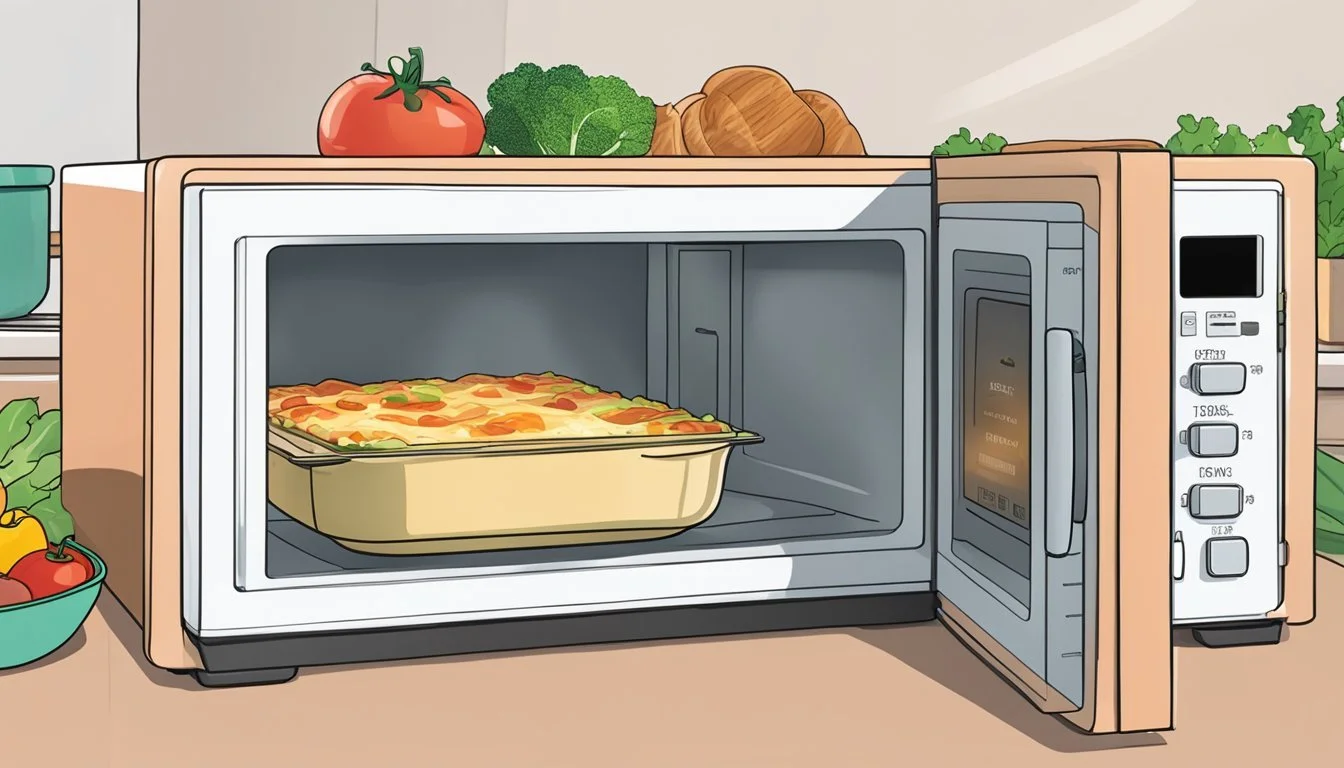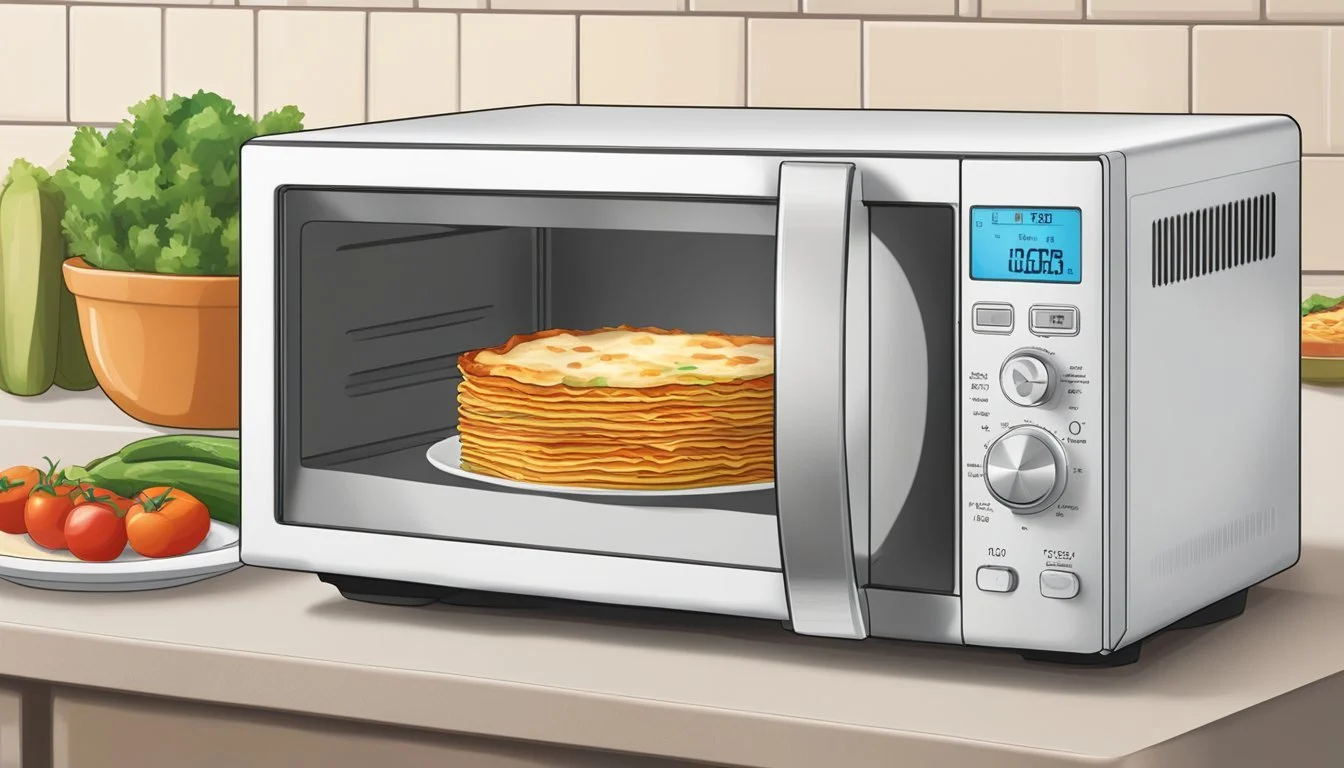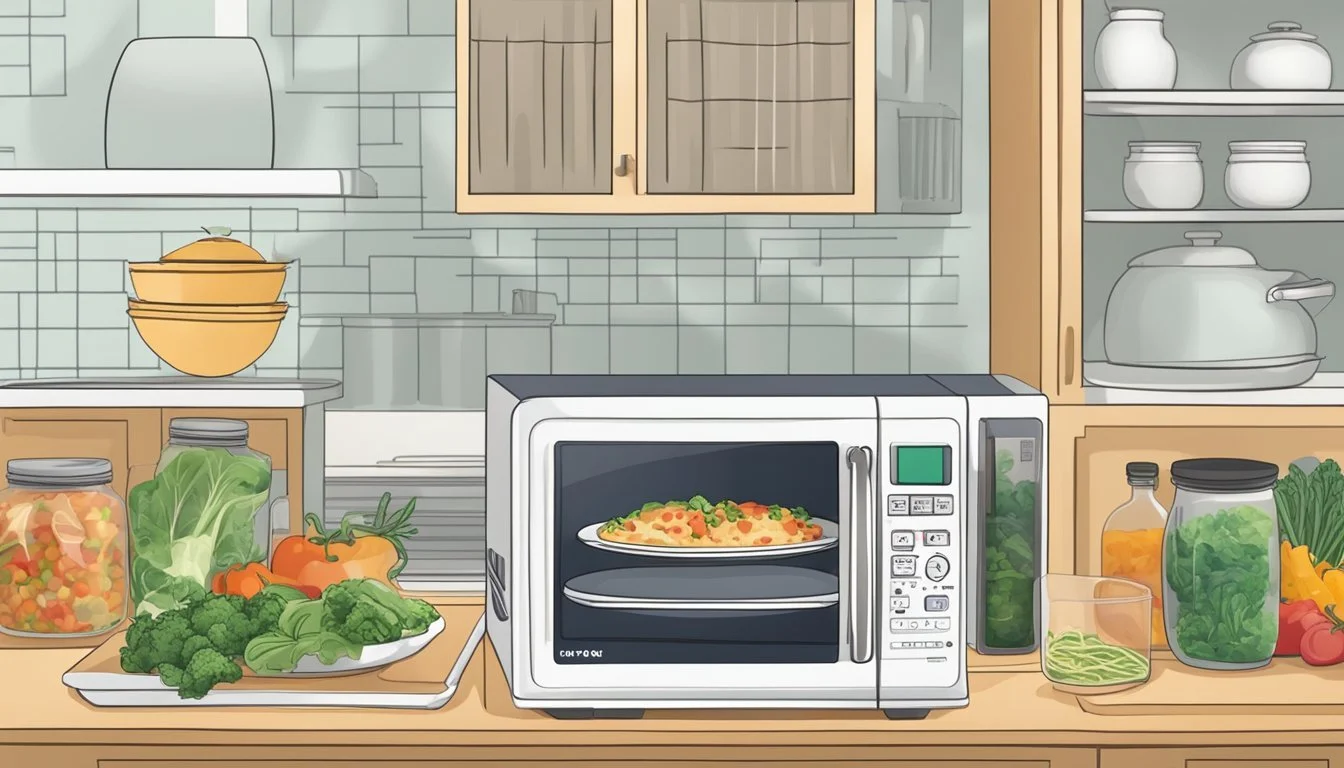How to Reheat Amy's Kitchen Vegetable Lasagna
Quick and Easy Methods
When it comes to enjoying a delicious meal like Amy's Kitchen Vegetable Lasagna, reheating it properly is crucial to maintaining its quality and flavor. For a perfectly reheated lasagna, preheat your oven to 350°F, place it in an oven-safe dish with a little added water, cover with foil, and heat for 20-30 minutes. Removing the foil in the last few minutes can give you that delightful, bubbly top.
Another convenient method is using a microwave. Place a serving in a microwave-safe dish, sprinkle it with a bit of water or sauce, cover it, and heat on medium for a minute. Check to see if it's warm throughout, and if needed, heat for an additional 30 seconds to a minute.
For those preferring a stovetop approach, heating lasagna in a skillet over medium-low heat with a lid can keep it moist and evenly heated. Adding a tiny amount of water and occasionally shaking the pan helps achieve good results.
Understanding Amy's Kitchen Vegetable Lasagna
Amy's Kitchen takes pride in creating a delicious and healthy vegetable lasagna. It features a combination of organic ingredients and is suitable for various dietary preferences, including vegetarian and gluten-free options.
Key Ingredients
The vegetable lasagna from Amy's Kitchen includes a variety of organic vegetables such as zucchini, spinach, onions, and carrots. These are layered with organic pasta and a rich tomato purée made from sun-ripened organic tomatoes.
The filling includes a blend of ricotta, mozzarella, and Parmesan cheese, providing a creamy texture. The lasagna is also enhanced with organic extra virgin olive oil, organic basil, sea salt, and organic garlic.
The lasagna is free from soy and tree nuts, making it suitable for those with specific dietary restrictions.
Nutritional Information
Each serving of Amy's Kitchen Vegetable Lasagna contains a balanced nutritional profile. It is a hearty yet healthy option, with calories kept in check while providing essential nutrients from vegetables and dairy.
-A typical serving provides:
Nutrient Amount per Serving Calories Approx. 300 Protein 11g Total Fat 12g Saturated Fat 6g Cholesterol 40mg Sodium 590mg Dietary Fiber 3g Total Sugars 7g
The lasagna is also available in a light in sodium version for those monitoring their sodium intake. It caters to vegetarian diets and underlines Amy's Kitchen's commitment to offering tasty, healthy meals without compromising on quality and taste.
Preparation Before Reheating
To ensure that Amy's Kitchen Vegetable Lasagna reheats evenly and retains its quality, it is important to follow a few preparatory steps. These include properly thawing the lasagna and preheating the oven to the correct temperature.
Thawing the Lasagna
If the lasagna has been stored in the freezer, it is best to thaw it before reheating. This can be done by moving the lasagna from the freezer to the refrigerator approximately 24 hours before you plan to reheat it.
Thawing in the refrigerator ensures that the lasagna will reheat evenly and helps maintain its texture and flavor. This method also enhances convenience since you can make it ahead and have it ready for reheating when needed.
If you’re short on time, you can thaw it in the microwave using the defrost setting. Place the lasagna on a microwave-safe dish and defrost in short intervals of 2-3 minutes until thawed, but not hot. Be cautious to avoid cooking or drying out the edges in the process.
Preheating the Oven
Preheat the oven to 350°F (175°C) before you start reheating the lasagna. This temperature is optimal for heating the lasagna evenly without drying it out or causing the vegetables to become mushy.
Place the lasagna in an oven-safe baking dish if it is not already in one. Add a small amount of water or sauce on top to keep it moist. Cover the dish with aluminum foil. This helps trap moisture and prevents the lasagna from drying out during the reheating process.
Allow the oven to reach the desired temperature before placing the lasagna inside, as this ensures even reheating.
Reheating Vegetable Lasagna
Reheating vegetable lasagna properly ensures it remains moist and flavorful. Here are three effective methods: using an oven, microwave, or stovetop, each with specific steps to guarantee the best results.
Oven Method
Using an oven for reheating vegetable lasagna is ideal for maintaining its texture and flavor.
Preheat the oven to 350°F (175°C).
Place the lasagna in an oven-safe dish.
Add a small amount of filtered water or sauce to keep it moist.
Cover the dish tightly with aluminum foil to trap moisture.
Heat for approximately 20-30 minutes.
For a bubbly top, remove the foil in the last 5 minutes.
This method is perfect for reheating multiple servings at once.
Microwave Method
The microwave is a convenient option for reheating one or two servings quickly.
Place the lasagna in a microwave-safe dish.
Add a small amount of water or sauce.
Cover with a microwave-safe lid or wrap to retain moisture.
Heat on medium for about 1-2 minutes.
Check if the lasagna is heated through, and if not, heat for an additional 30 seconds to 1 minute.
This method is fast but be careful to avoid drying out the lasagna.
Stovetop Method
The stovetop method uses a skillet to reheat lasagna gently.
Preheat a skillet over medium-low heat.
Place the lasagna in the skillet.
Add a few tablespoons of filtered water to the skillet.
Cover the skillet with a lid to trap steam.
Cook for about 20 minutes, shaking the pan occasionally.
For a crispy bottom, remove the lid in the last 5 minutes.
This method keeps the lasagna moist and can enhance its flavors.
Each method caters to different needs and ensures your lasagna is as delicious as when it was first made.
Ensuring Optimal Flavor and Texture
To reheat Amy's Kitchen Vegetable Lasagna while maintaining its flavor and texture, focus on adding moisture and understanding topping considerations. These steps will help preserve the lasagna's rich, cheesy layers and robust sauces.
Adding Moisture
Proper moisture is key to preventing lasagna from drying out during reheating. Before placing it in the oven, sprinkle a small amount of water or extra virgin olive oil on top. This keeps the noodles tender and prevents the edges from becoming too crispy.
Cover the lasagna with aluminum foil to trap steam, which helps maintain moisture. If using a microwave, place a damp paper towel over the dish. This method ensures even reheating and keeps the cheese and sauces from drying out.
Topping Considerations
Maintaining the integrity of the lasagna’s topping is crucial. Before reheating, add a bit more shredded mozzarella or parmesan cheese to enhance the cheesy texture. This not only improves flavor but also creates a fresh, gooey top layer.
Sprinkle some black pepper or a dash of extra virgin olive oil for added richness and flavor. If the lasagna has melted cheese toppings, ensure they are evenly spread to promote uniform heating. Utilizing these topping strategies will keep the lasagna flavorful and visually appealing.
Serving Suggestions
Pairing Amy's Kitchen Vegetable Lasagna with the right sides and toppings enhances the meal's flavors. Consider including hearty accompaniments and fresh garnishes to make the dish more enjoyable.
Accompaniments
To complement the rich texture of vegetable lasagna, garlic bread makes an excellent side. Its crispy exterior and buttery, garlicky flavor add a satisfying contrast. Another great option is a fresh salad. A simple green salad with arugula, cherry tomatoes, and a light vinaigrette can provide a refreshing balance to the hearty lasagna.
Roasted vegetables are another recommended side. Vegetables like carrots, zucchini, and bell peppers, when roasted, bring out their natural sweetness. This complements the savory layers of the lasagna. These accompaniments not only enhance the main dish but also contribute to a well-rounded meal.
Garnishes
Adding the right garnishes to Amy’s Kitchen Vegetable Lasagna can elevate its flavors. Fresh basil leaves, sprinkled on top after reheating, give a burst of freshness and a hint of sweetness. Grated parmesan cheese can also be added for those who enjoy extra cheesiness in their lasagna.
A drizzle of high-quality olive oil can enhance the flavors and add a touch of richness. Also, consider a sprinkle of crushed red pepper flakes for a bit of heat. These simple yet effective garnishes can make the difference between a good meal and a great one.
Storage Tips for Leftovers
When it comes to storing leftover Amy's Kitchen Vegetable Lasagna, proper storage techniques can help maintain its flavor and texture.
First, refrigerate any leftovers promptly. Lasagna should be placed in the refrigerator within two hours of cooking. Storing it in an airtight container can prevent it from drying out and absorbing other odors from the fridge.
For those who plan to consume their leftovers within a few days, refrigeration is sufficient. Leftovers can be kept in the refrigerator for up to four days.
Should you want to store the lasagna for a longer period, freezing is an excellent option. Use airtight containers or heavy-duty aluminum foil to prevent freezer burn. Frozen lasagna can be safely stored for up to three months.
When you're ready to reheat, make sure it reaches an internal temperature of 165°F to ensure it’s safe to eat.
Keep the lasagna in single portions if possible, as it facilitates easier reheating. Label containers with the date before placing them in the freezer to keep track of storage time.
Safety Considerations
Food safety is paramount when reheating Amy's Kitchen Vegetable Lasagna.
It's crucial to ensure the lasagna reaches the proper reheating temperature. The internal temperature should be 165°F (74°C) to eliminate any harmful bacteria.
To check, use a food thermometer inserted into the center of the dish.
Preventing cross-contamination is also essential. Use clean utensils and surfaces when handling the lasagna. Do not let the lasagna come into contact with raw meats or unwashed produce.
Proper heating-through is important. Make sure the lasagna is evenly reheated. Cold spots can harbor bacteria and compromise food safety.
Cover the lasagna with aluminum foil to retain moisture and ensure consistent heating throughout the dish.
Keep these points in mind to safely enjoy Amy's Kitchen Vegetable Lasagna.







